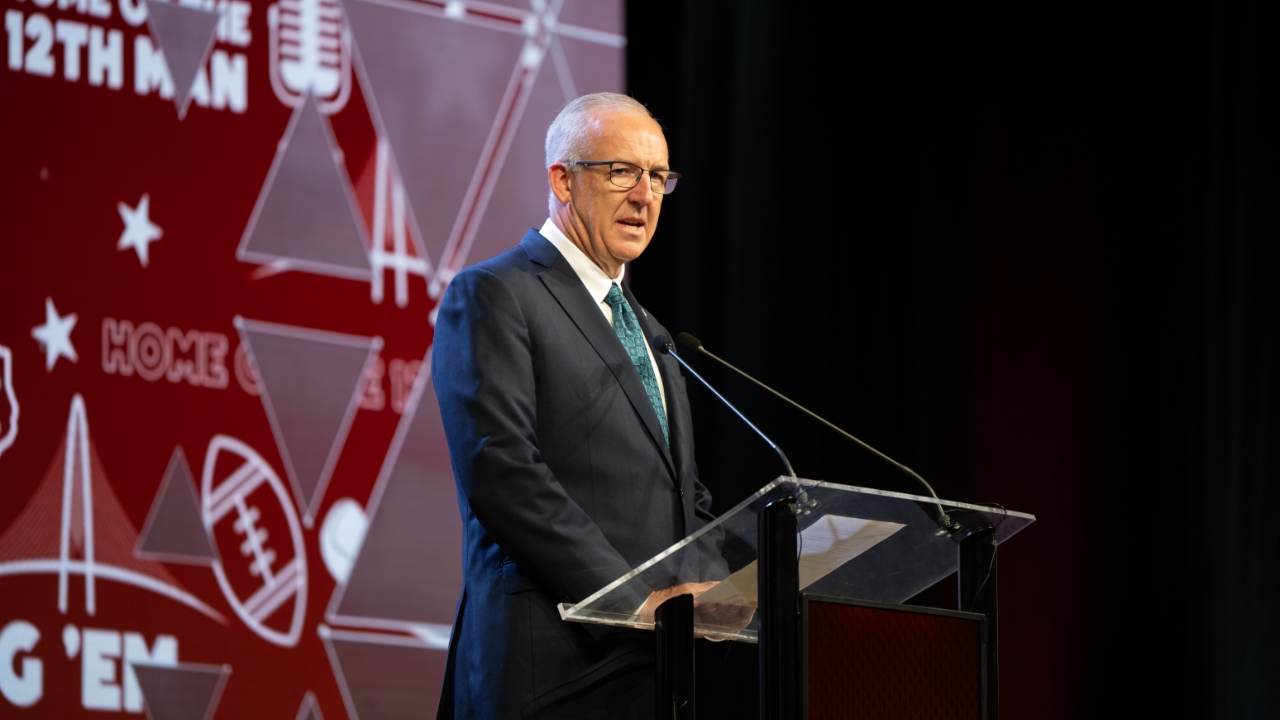There are still plenty of questions surrounding the NCAA's antitrust settlement as revenue sharing is on its way to college athletics. During Tuesday's edition of TexAgs Radio, ESPN's Dan Murphy offered some insight on the latest regarding the future of college sports.
Key notes from Dan Murphy interview
- There’s a lot to unpack with all of this stuff. As long as the settlement goes through, this time next year, schools will be cutting direct checks to their athletes. There will be a big pot of money that each school can, on its own, decide how to split up. It’s going to start at $22-23 million next year. That could grow over the next ten years up into the low $30 million that each school can give out. It’s unclear how much Title IX will apply.
- This settlement is a really big step forward in the NCAA trying to figure out how to build a system that works in the future, but it doesn’t solve all of their problems. I think we’re still several steps away from having a system that feels sustainable.
- This new revenue share is, not exactly this, but easiest to think about as a salary cap. The NCAA is trying really hard to change what collectives do. You’re right. They’re not going to go away. The way collectives work now, most of the money coming from collectives is supposed to be for endorsement deals, but really, you’re paying for the kid to show up and come to the school and be on campus. The NCAA is trying to stop that.
- That, to me, is the biggest question moving forward is if this pot is the ceiling of what the top schools are paying or is that the floor of what schools will be giving and then the collectives are coming in on top of that? The NCAA is trying really hard to make that the ceiling.
- If they end up putting that in place, it’s just going to go back to what it was in the 80s and 90s, where that money is going fully under the table.
- I think if college football players were ever able to unionize, it would work out pretty well for them in the long run, although it would change the shape of money flowing through the sport.
- I can see a version where the top 30, 40, or 50 schools, whatever it may be, decide we are a full-blown entertainment industry. We’re still going to have guys go to class, and we still want you to be connected to school in some way, but we’re going to be a version of professional sports. Once you get there, one of the problems would be unionizing athletes because you’ve got 20-something sports and 70 Power-5 schools or 130 FBS schools.
- It’s really hard to organize that many athletes, but if we get to a point where you’ve got a league where it’s just 30 or 40 football teams that are doing their own thing and have split off, it becomes a lot easier to organize that group of athletes. I think we could see a collective bargaining agreement in the future between that kind of a size league and the players who would play in it. Once you get a collective bargaining agreement, you can limit the transfer portal, you can limit the way players move around legally without running into all the lawsuits the NCAA has run into the past few years.
- It's been driving me crazy to hear coaches talk about potentially losing the walk-ons. The way this is changing is instead of being a limit on 85 scholarships, there is now a limit on how many players you can carry on your roster, and it’s going to be 105, so there’s 20 more potential scholarship spots coming. You don’t have to give a single scholarship if you don’t want to. I think coaches are concerned that competition is going to create a system where everyone is going to want to give 105 scholarships. I don’t know necessarily that’s going to happen.
- I think if having walk-ons is an important part of your culture, like A&M, and you want it to be, then just save ten spots where you don’t go recruit 105 kids. Recruit 85, recruit 95, and save ten for the kids on campus to come tryout, and if they’re good enough, throw them on scholarship, too. The idea that someone is forcing football teams to get rid of walk-ons is just not true.
- If you’re on scholarship, there’s no guarantee that you’re getting any of this revenue-sharing money. Let’s say a football team has a budget of $15 million next year, they could give all $15 million to one player if they wanted to, or they could just give money to their starters or top 30 or 40 players. If you’re the 75th or 80th best player on your team, I don’t think you’re going to be getting much of a check from your school; your rights just aren’t worth that much. A scholarship is actually pretty fair compensation if you’re the 80th best player on your team and not seeing the field too much. I think it’s more likely that most of those guys lower on the roster aren’t going to receive revenue-share dollars, even if they are technically able to.

